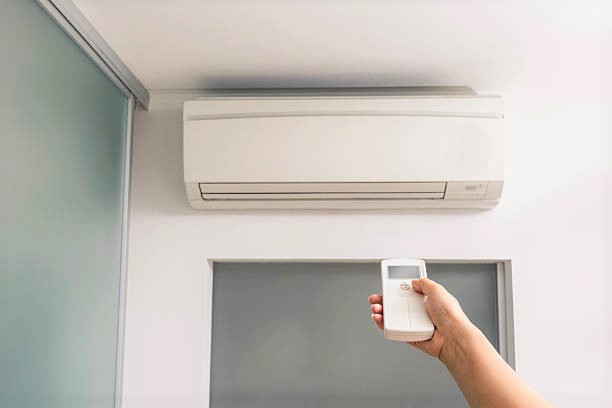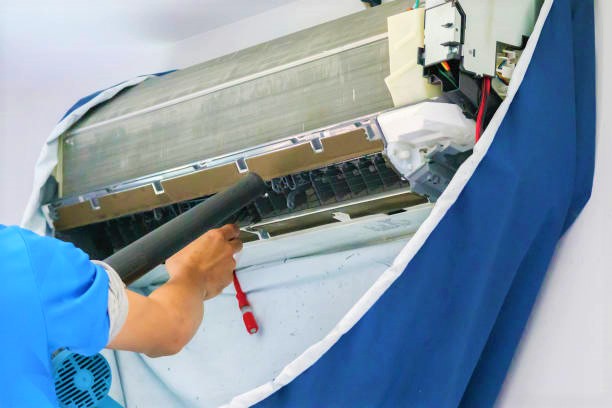
Whether you don’t have an air conditioner or you just want to save some money, there are plenty of ways to beat the summer heat without relying on AC.
Ceiling fans can work wonders as part of a DIY air conditioning system, as long as they are rotated in the correct direction (counterclockwise in summer and clockwise in winter) to push down on the air.
1. Turn Your Ceiling Fan Counterclockwise
With summer quickly approaching, you’re probably looking for a few ways to beat the heat. You’ll want to make sure your air conditioning is working well and that you’re staying hydrated.
One way to do this is by turning your ceiling fan counterclockwise, which creates a cool breeze and reduces the need for air conditioning. This can save you money on your utility bills and makes you feel significantly cooler.
In addition to helping keep you cool, your fan can also help distribute warm air around your home. Changing your fan’s direction will help you save 15% to 40% on your air conditioning costs this summer and next winter.
2. Close Your Curtains
The right curtains will help you cool down on hot summer days. They also provide a sense of privacy and create a calming atmosphere inside your home.
The best part is that a well-made pair can save you money on your energy bills. If you’re not too keen on the idea of sewing up a new pair, consider investing in thermal room darkening curtains or blinds with solar and honeycomb technology.
Depending on your climate, your home’s characteristics, and the weather, it may be best to try a little bit of everything. If you’re not able to implement any of these hacks, consider buying a portable air conditioner or hiring a handyman. Regardless of your options, these 5 Easy DIY Air Conditioning Hacks to Beat the Heat This Summer should help you stay cool and comfortable all season long.
3. Turn Off the Lights
If you’re looking to reduce your energy bills and get ahead of the summer heat, one of the best ways to do it is by turning off the lights. You’ll not only save money on your utility bill, but you’ll also extend the life of your light bulbs and buy them less often.
Turn Off the Lights is a free browser extension that helps you watch your videos in more comfortable conditions. The extension works for all major video websites such as YouTube, Vimeo, Dailymotion, Hulu, and Metacafe. It’s available as a plugin for Microsoft Edge, Internet Explorer, Google Chrome, Mozilla Firefox, Opera, Safari, Maxthon, and Yandex Browser. It’s very easy to use and has a 4.76-star rating on its website. Moreover, it’s compatible with the latest versions of all these browsers.
4. Turn Off the Oven
When you’re cooking, the last thing you want is your oven to be wasting energy. This is why the best way to save money on your electric bill is to turn off your oven. This will also help reduce your carbon footprint and keep you from racking up high bills for heating your home.
A lot of people are under the impression that turning off your oven will make it worse, but that’s not always the case. For instance, many models offer a power-saving mode that will reduce your energy consumption and cut down on your bills. The best part is you can activate this mode by merely unplugging the appliance or flipping the circuit breaker. To find out if your appliance is power-saving or not, check your user manual.
5. Add Insulation to Your Attic
Your attic is the largest void in your home’s thermal barrier, and insulating it can help keep you cool by slowing down the transfer of heat between the outside air and the inside.
The Department of Energy estimates that a properly insulated attic can shave 10 to 50 percent off your heating bill during the coldest months of the year. It can also help stabilize your house’s indoor temperature during hot weather.
Adding insulation is a do-it-yourself project that’s easy and inexpensive to complete. But be sure to check your existing insulation’s R-value before starting.
You can add insulation to your attic using several types of materials, including cellulose and fiberglass. But if you choose cellulose, be sure to buy from manufacturers that add ammonium sulfate or borate to the product. This makes it fire-resistant and will help prevent it from catching on fire in your attic.
